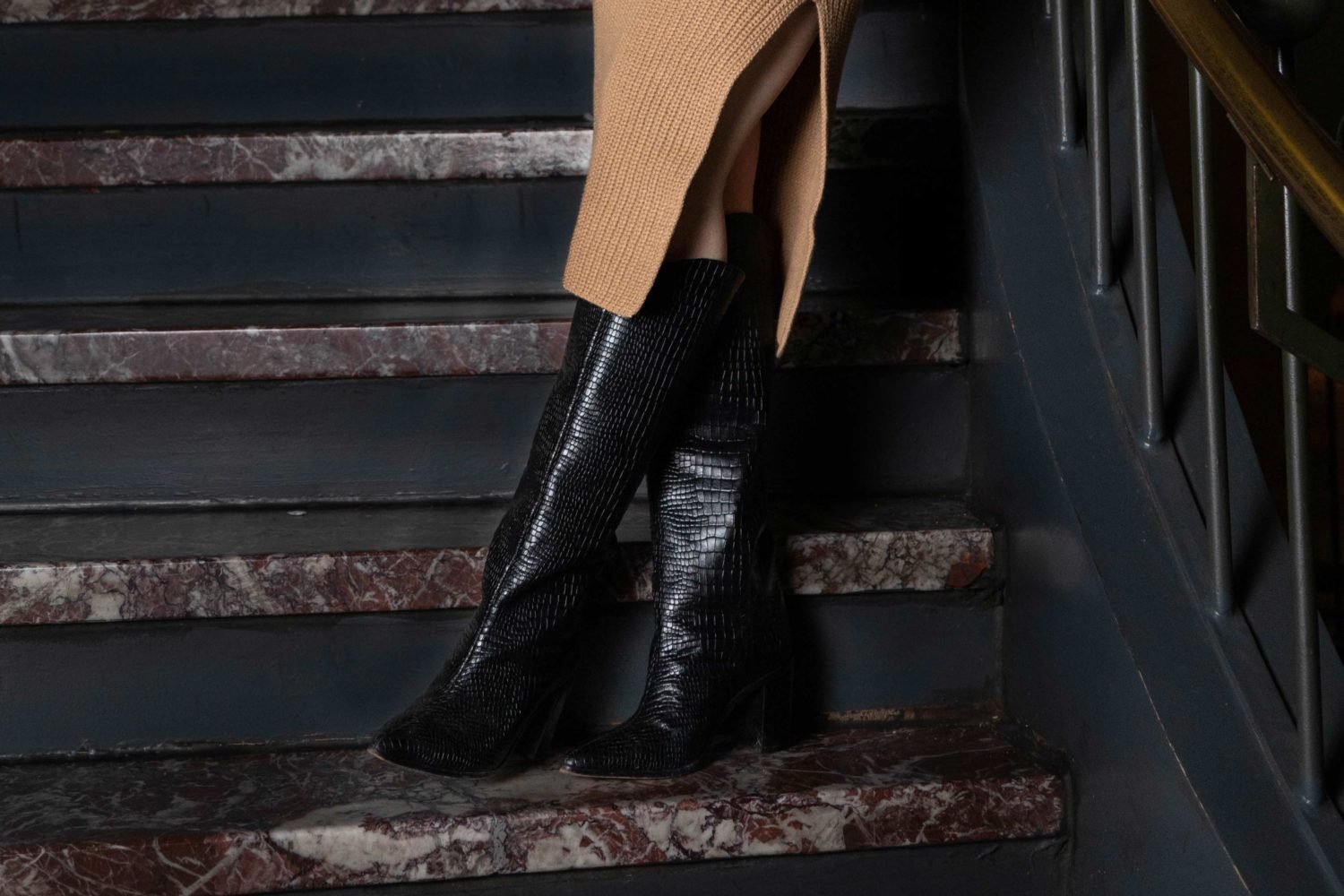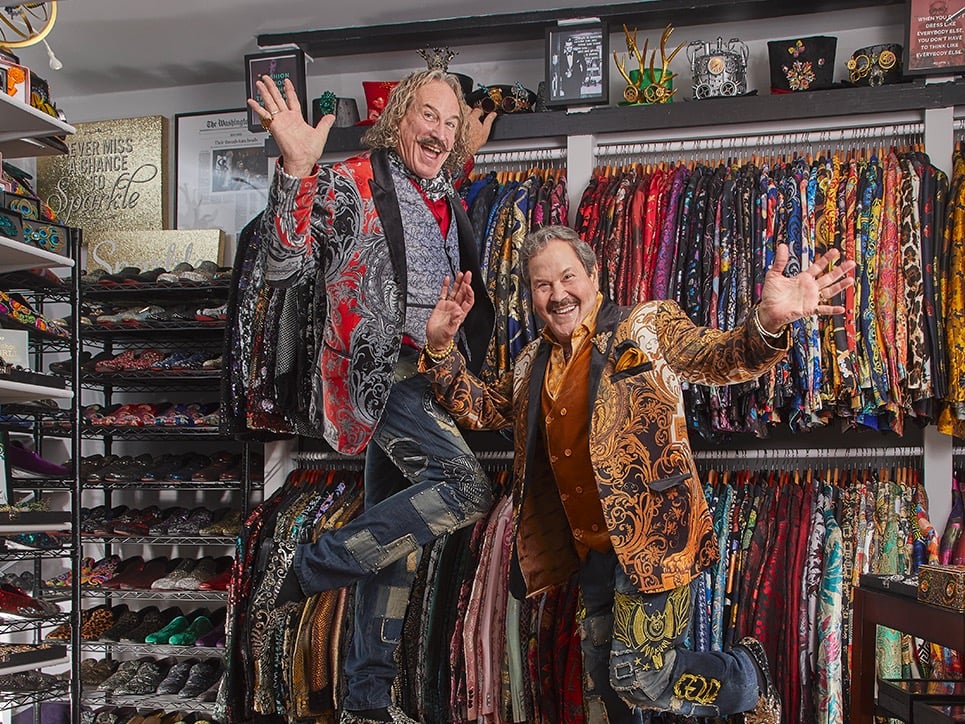Style > Beauty > Great Hair
“There is no way that anybody can have naturally shiny hair anymore,” says Bernard Portelli, owner of Okyo Salon in Georgetown.
Though healthy hair is shiny hair, Portelli says, several factors work against natural shine, including how often people shampoo. “Everybody’s washing their hair too often—daily is too much,” he says. “Even if you’re using pricey products, they’ve got chemicals in them.”
Pollution, blow-drying, chemical processing, and product buildup can also dull hair, stylist to the stars Frédéric Fekkai said in an e-mail interview.
What’s a person in search of shine to do?
Maybe hit the bottle—a bottle of glaze or gloss, that is. Glazing and glossing are two quick techniques many stylists like for adding shine as well as improving texture and prolonging color and highlights.
Portelli says he’s been doing glazing and glossing—he says they are different processes, although other stylists say they’re the same—for 20 years. Still, many Washingtonians are unfamiliar with the techniques. “Some Washingtonians may not know about them because people here are a little bit conservative,” he says. “But ask any stylist in New York or LA and they’ll know right away.”
Courtney Billet, 40, a communications director for a government agency, is a longtime Portelli client with long, layered, chocolate-brown hair. For the past two years she’s been getting alternately glazed and highlighted every month. The treatment is best for women like Billet who are beginning to see gray.
“With glazing, I can go longer between my highlights appointments,” she says. “It gives my hair extra oomph. I sit in the shampoo chair. Bernard mixes up some goop and puts it in my hair. I lie there and look at my BlackBerry for ten minutes—and I get pretty, shiny hair.”
The “goop” is a mixture of pigment, developer, and, mainly, water. Glaze contains more pigment than gloss, and it subtly darkens the color of roots and diminishes the line between gray roots and darker hair. Glossing does the opposite, lightening the natural color of roots, blurring the line between dark roots and lighter hair.
Blondes are ideal for glossing. Dana Smith, a 50-year-old Great Falls homemaker and Portelli client, is a natural blonde whose hair started going dark in her twenties. After 25 years of monthly coloring and highlighting, her thin hair was fried.
“Glossing did wonders for my hair,” says Smith. “It stopped breaking off, gave me body, and made it much healthier.” She pays $45 for the 20-minute treatment every other month.
If you want to try a less expensive at-home shine treatment, Portelli recommends Frédéric Fekkai’s Salon Glaze Clear Shine Rinse ($28), which has no pigment and works on all hair colors and types. I was intrigued because my naturally curly and wavy red hair will never reflect light as much as, say, Demi Moore’s.
“Straight, flat hair is naturally more reflective than curly or wavy hair,” Fekkai told me.
I went to Nordstrom at Montgomery mall to buy Salon Glaze and found that it was sold out. The saleswoman took pity and sold me the last bottle she had, which she’d stashed in a drawer for herself.
I used it every couple of days for a week—it’s supposed to build shine cumulatively—and my hair loved it. After shampooing and conditioning, I worked a little through my damp hair from roots to tips. The product felt silky and smelled light. Five minutes later I rinsed it out and blow-dried as usual. My hair looked lustrous and rich, like the glaze of an Old Master painting. It also felt thicker.
“There’s nothing better than freshly glazed hair,” says Christina Pereira, senior stylist at Salon Bleu in Tysons Galleria. She’s been glazing and glossing—she uses the terms interchangeably—her own and her clients’ hair for years. “It’s especially good in the summer because hair fades faster in the sun and can get flat,” she says.
Glaze, Pereira says, can make what you have prettier by giving hair more reflection. “I wouldn’t do it more than once a month, though,” she says. “It can build up.”
Although the catalyst for gloss is peroxide, says colorist Krista Depeyrot of Salon Cristophe in DC, the amount is very low—it’s used to open up the cuticle of the hair. There’s also no ammonia, and the rest of the solution, she says, is “chock full of conditioners that improve the porosity of the hair, which is what causes color to wash out quickly. It gets into the cortex of each strand and actually affects the quality of the hair.”
You don’t have to be a woman to get glossed.
“I think glossing’s the greatest thing since sliced bread,” says David Cohen of David’s Beautiful People Salon in Rockville. He’s been glossing his white hair for years.
“It’s a passion,” he says. “A passion for shine.”


















